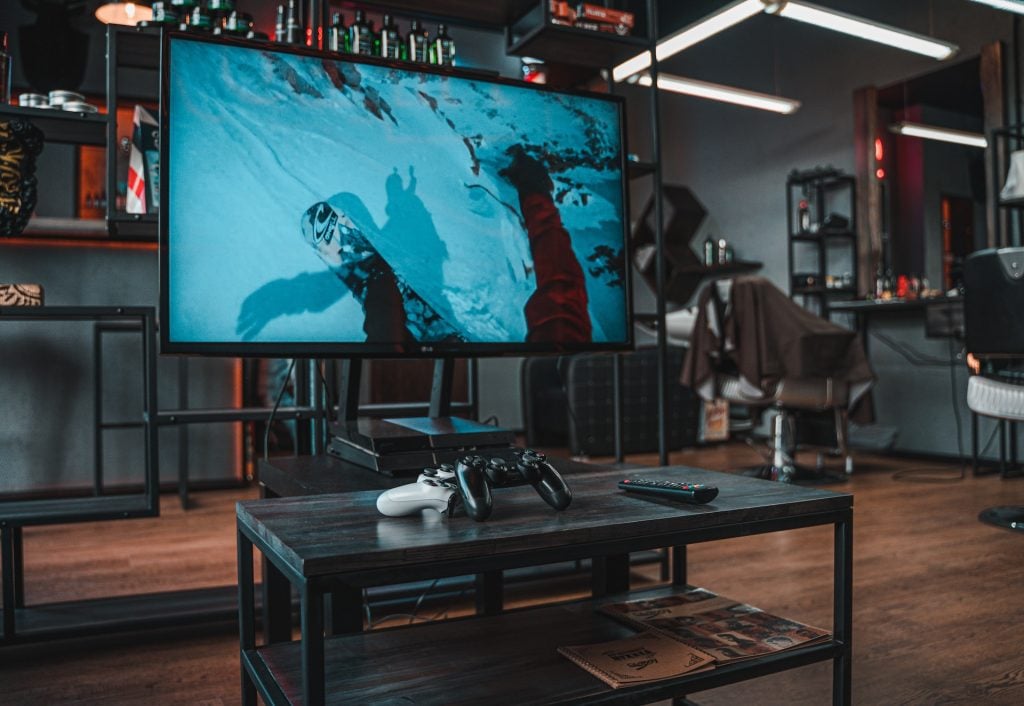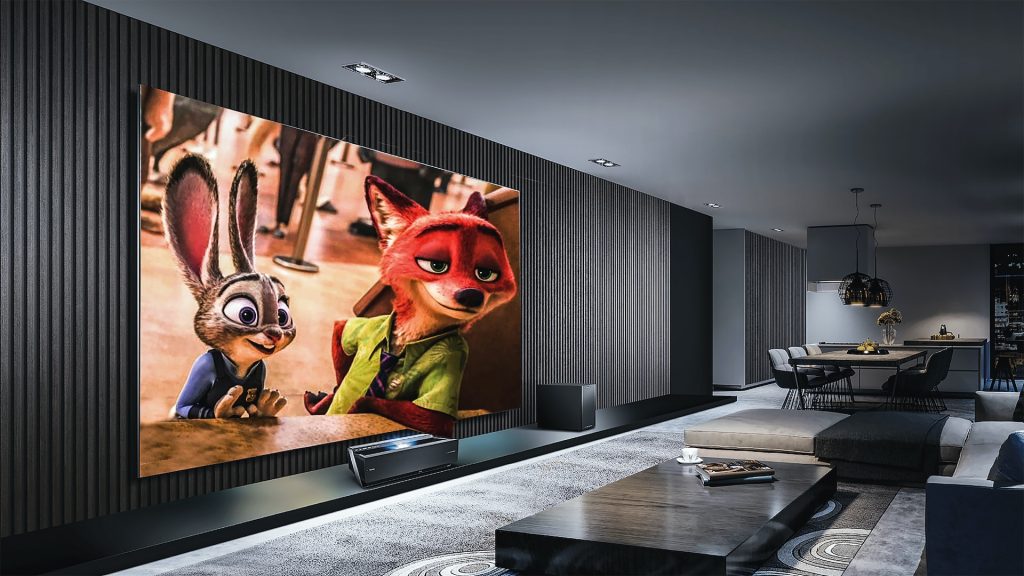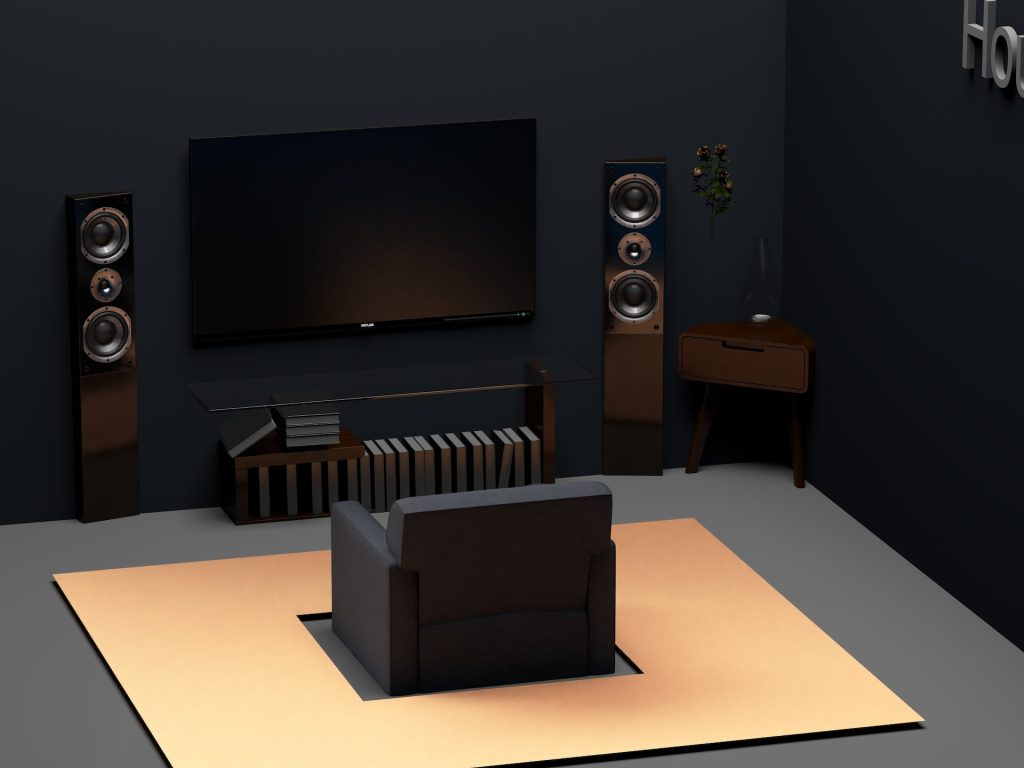In today's fast-paced world, having a personal oasis for entertainment is not just a luxury, but a delightful escape.
A home theater, essentially a dedicated space in your house mimicking the immersive experience of a movie theater, brings this luxury into your living space. It's a place where visuals and sounds come alive, transforming how you watch movies, play games, or even binge-watch your favorite series.
In this guide, we aim to lead you through the exciting journey of setting up your very own home theater, step by step.
Understanding the Basics of a Home Theater

A home theater is more than just a room with a large TV. It's an immersive environment designed to replicate the intense and captivating experience of a cinema. At its core, a home theater combines high-quality audio and visual equipment to create a powerful, sensory, cinematic experience in the comfort of your own home.
Key Components of a Home Theater
- Display (TV/Projector): This is the centerpiece of your home theater. Whether you choose a large-screen TV or a projector and screen setup depends on your room size, budget, and personal preference. Both have their advantages: TVs are simpler to set up and generally have better picture quality in well-lit rooms, while projectors can provide a more authentic theater experience with larger images.
- Sound System: A good sound system is crucial for an immersive experience. Surround sound systems, like 5.1 or 7.1 setups, include multiple speakers placed around the room to envelope the viewer in sound. More advanced systems, like those with Dolby Atmos, add overhead sound, creating a three-dimensional audio effect.
- Seating: Comfort is key in a home theater. The choice of seating can range from luxurious recliners to sofas and sectional couches. The right seating arrangement ensures an unobstructed view and enhances the overall comfort and experience.
- Lighting: The right lighting sets the mood and enhances the viewing experience. Dimmable and ambient lighting can help create a theater-like environment, while avoiding glare on the screen.
Importance of Room Size and Layout
The size and layout of the room are crucial in setting up an ideal home theater. Larger rooms can accommodate bigger screens or projectors and more speakers, providing a more authentic theater experience.
The shape of the room, wall materials, and even the color of the walls and ceiling can affect the sound and picture quality. It's important to consider these factors for optimal placement of your display, speakers, and seating to ensure the best possible audio-visual experience.
Choosing the Right Equipment

Selecting the right equipment is pivotal in creating an authentic home theater experience. Your choices will depend on your personal preferences, the size of your room, and, of course, your budget.
Display Options: TV vs. Projector
When it comes to the visual aspect of your home theater, the main question is whether to go with a traditional TV or a projector and screen setup.
- TV: Modern TVs offer incredible picture quality, with options like 4K resolution, OLED technology, and HDR compatibility, which enhances the color and contrast of the image. They are easier to set up and perform well in rooms with ambient light. However, the size of the TV is a limiting factor, and large-screen TVs can be quite expensive.
- Projector: Projectors provide a larger screen size, offering a more authentic cinema experience. They work best in dark rooms and can be more budget-friendly for larger screen sizes compared to TVs. However, projectors require more space and a bit of setup, including a proper screen and control of room lighting.
When it comes to key factors to consider, screen size, resolution, and HDR compatibility are crucial. A larger screen can provide a more immersive experience, but it needs to fit well in your space. High resolution and HDR compatibility will enhance the overall picture quality.
Sound System Selection
The sound system is what truly immerses you in the movie, game, or show.
- Overview of Sound Systems: The basic surround sound setup is a 5.1 system, which includes five speakers and one subwoofer. A 7.1 system adds two additional speakers, enhancing the surround sound experience. For the ultimate in audio immersion, Dolby Atmos systems add overhead sound, creating a 3D audio effect.
- Importance of Acoustics: The room's acoustics play a significant role in the sound quality. Hard surfaces reflect sound, while soft surfaces absorb it. The right balance will ensure clear, crisp sound.
- Tips for Choosing Speakers and Subwoofers: Look for speakers that match the size of your room and your system's power output. Subwoofers are crucial for deep, rumbling bass, essential in action movies and immersive games.
Additional Equipment
- Media Players and Streaming Devices: To access a wide range of content, include a media player or streaming device that supports high-definition content and, ideally, the same HDR formats as your display.
- Gaming Consoles: If you're a gamer, integrating a gaming console can add another dimension to your home theater. Ensure that the console's output matches the capabilities of your display and sound system.
Entertainment Room Setup and Design

Once you've selected your equipment, the next step is to create the perfect environment in your room to maximize the quality of your home theater experience. This involves careful consideration of acoustics, visual elements, seating, and lighting.
Room Acoustics
The way sound behaves in your room is critical to your home theater experience.
- Soundproofing and Acoustic Treatment: Soundproofing prevents external noise from entering the room and also keeps the sound from your system inside. Acoustic treatments, like acoustic panels or bass traps, can enhance sound quality by managing reverberations and reducing echoes.
- Speaker Placement and Calibration: Place your speakers based on the layout of your room and the type of sound system you have. A central speaker should be placed directly under or above the screen, with other speakers arranged around the seating area. Calibration with a sound meter can ensure that the sound from each speaker reaches the audience in balance.
Visual Elements
The placement of your screen is just as important as the screen itself.
- Optimal Screen Placement: The screen should be at eye level when seated. If you're using a projector, ensure it's placed in a way that fills the screen completely without any distortion.
- Viewing Distance and Angles: The ideal viewing distance depends on the size and resolution of your screen. A general rule is to sit at a distance of about 1.5 to 2.5 times the diagonal width of the screen. The viewing angle shouldn't exceed 30 degrees, as wider angles can distort the image and cause discomfort.
Seating Arrangements
Comfortable seating is key to enjoying your home theater.
- Types of Seating: Choose between recliners, sofas, or sectional couches based on comfort and the size of your room. Recliners offer the best comfort but take up more space.
- Arranging Seats for the Best Viewing Experience: Ensure that every seat has a clear view of the screen without obstruction. If your room allows, tiered seating can provide an unobstructed view for everyone.
Lighting
Proper lighting enhances the overall viewing experience.
- Importance of Lighting Control: The ability to control lighting is essential in a home theater. It should be dimmable to prevent glare and reflections on the screen.
- Recommendations for Ambient and Task Lighting: Use ambient lighting to provide a comfortable level of brightness without interfering with the screen. LED strip lights or recessed lighting can add a stylish touch. Task lighting, such as floor lamps or table lamps, can be used for activities in the room that aren't screen-related.
Installation and Calibration

With your equipment and room setup ready, it's time to bring your home theater to life. Proper installation and calibration are crucial for achieving the best possible audio and visual experience.
Step-by-Step Guide on Setting Up the Equipment
- Positioning the Display or Projector: Start by placing your TV or projector screen. Ensure it's centrally aligned with your primary seating area. If using a projector, mount it on the ceiling or place it on a stable surface, aligned with the center of the screen.
- Setting Up the Sound System: Place the central speaker either above or below the screen, aligning it with the center. The front left and right speakers should form a slight angle towards the seating area. Rear speakers (in a 5.1 or 7.1 setup) should be placed at ear level when seated, slightly behind the viewer.
- Subwoofer Placement: The subwoofer can be placed almost anywhere in the room, as bass frequencies are non-directional. However, avoid placing it in a corner, which can cause booming.
- Connecting Devices: Connect your media players, streaming devices, and/or gaming consoles to your TV or projector. Use high-quality cables to ensure the best signal transmission.
- Cable Management: Secure and organize cables with cable ties or conduits to avoid clutter and potential tripping hazards.
Calibration of Audio and Video for Optimal Performance

- Video Calibration: Adjust the display settings such as brightness, contrast, color balance, and sharpness. Many TVs and projectors have built-in calibration tools. Alternatively, use calibration discs or professional calibration services for precise settings.
- Audio Calibration: Use a sound meter to balance the volume of each speaker at your primary seating area. Most modern receivers come with automated calibration systems that can adjust settings using a microphone placed in different seating positions.
Tips for Cable Management and Organization
- Label Your Cables: Labeling each cable can save time and confusion, especially when troubleshooting or adding new components.
- Use Cable Channels or Covers: Hide cables behind walls or under carpets where possible, or use cable channels and covers to keep them organized and out of sight.
- Regular Checks: Regularly check your cables for any wear and tear, and ensure they remain securely connected.
Conclusion
Embarking on your home theater journey is an exciting endeavor that transforms your entertainment experience. With the right setup and a touch of personal flair, you can create a space that not only enhances your movie-watching moments but also becomes a cherished part of your home.
Start your adventure today!




